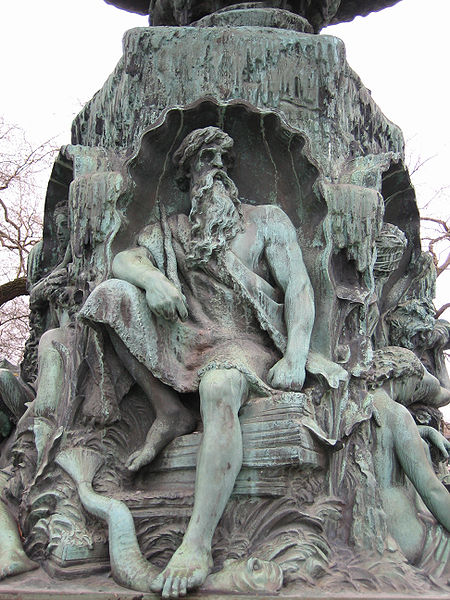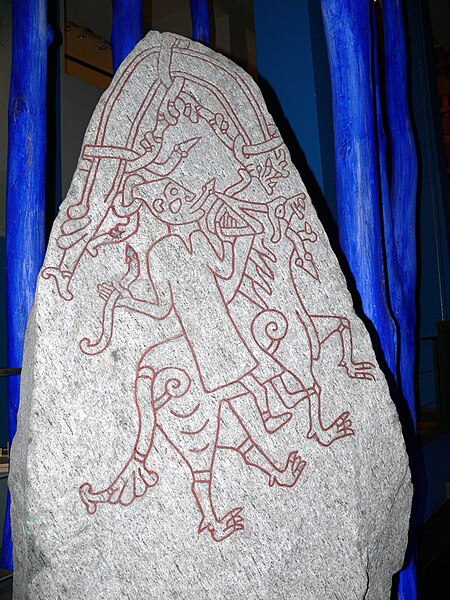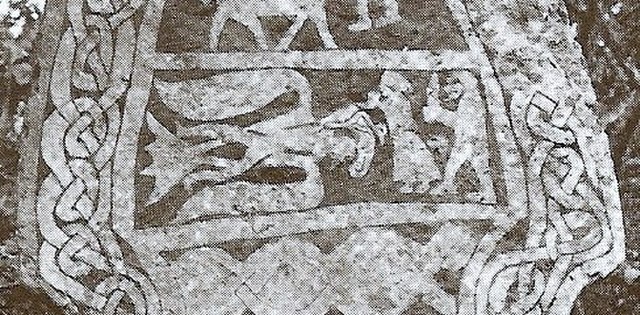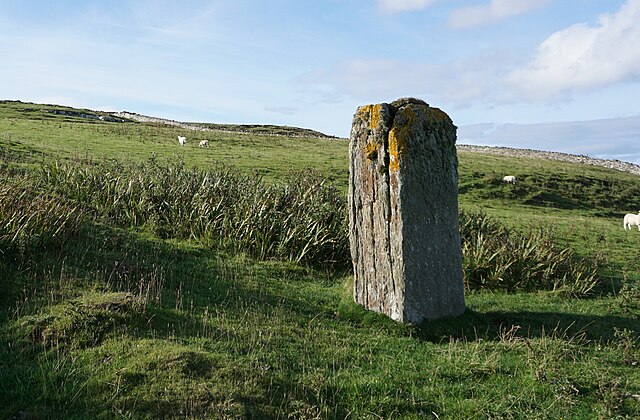Ægir, Hlér, or Gymir, is a jötunn and a personification of the sea in Norse mythology. In the Old Norse record, Ægir hosts the gods in his halls and is associated with brewing ale. Ægir is attested as married to a goddess, Rán, who also personifies the sea, and together the two produced daughters who personify waves, the Nine Daughters of Ægir and Rán, and Ægir's son is Snær, personified snow. Ægir may also be the father of the beautiful jötunn Gerðr, wife of the god Freyr, or these may be two separate figures who share the same name.
Ægir, Rán and their Nine Daughters prepare a huge vat of ale. 19th-century Swedish book illustration of the Poetic Edda.
An anonymous illustration of Ægir published in 1901
J. P. Molin's fountain relief featuring Ægir and his nine daughters
Näcken och Ägirs döttrar by Nils Blommér, 1850, depicting Ægir and his nine wave daughters
A jötunn is a type of being in Germanic mythology. In Norse mythology, they are often contrasted with gods and other non-human figures, such as dwarfs and elves, although the groupings are not always mutually exclusive. The entities included in jötunn are referred to by several other terms, including risi, þurs and troll if male and gýgr or tröllkona if female. The jötnar typically dwell across boundaries from the gods and humans in lands such as Jötunheimr.
10th-century picture stone from the Hunnestad Monument that is believed to depict a gýgr riding on a wolf with vipers as reins, which has been proposed to be Hyrrokkin.
The Gotlandic image stone Stora Hammars III is believed to depict Odin in the form of an eagle (note the eagle's beard), Gunnlöð holding the mead of poetry, and Suttungr.
The Yetnasteen - a standing stone in Rousay in Orkney, held in local folklore to be a giant or jötunn that has been turned to stone.






